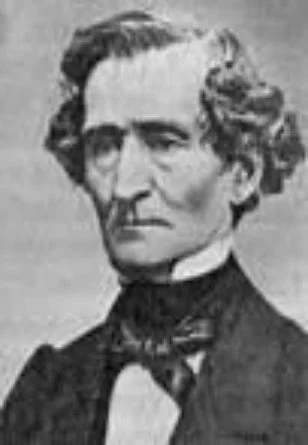Berlioz, Symphonie Fantastique, movement 4
Hector Berlioz
French composer Hector Berlioz (1803-1869) was a master of orchestration, the art of writing music for an orchestra to play. His creative approach to the sounds of which an orchestra is capable can be heard in the selections from his Symphonie Fastastique. He also was a famous conductor and was known to direct concerts with as many as 1000 performers.
His masterpiece, Symphonie Fantastique, is an example of a “program” symphony. The “program” is a story, which, in the case of this symphony, sometimes is considered somewhat autobiographical: a musician, afflicted with a sickness of spirit not uncommon to artists of his day, sees a woman and falls desperately in love with her. She is associated in his mind with a musical idea, an idée fixe (an obsession):
idée fixe
In Movement 4 of the symphony, the musician, in despair over the unrequited affection of the beloved, poisons himself with opium. Although he doesn’t die from the overdose, he has a strange vision: he imagines he has killed the beloved and is led to the scaffold— the guillotine. As Berlioz writes, “At the end of the march, the first four bars of the idée fixe reappear like a final thought of love interrupted by the fatal blow when his head bounced down the steps.” Ghastly!
The symphony concludes in its most famous movement, the fifth. It is the subject of next week’s blog article.
Subscribe to receive an email notice when I post a new blog article.
Please leave a comment on the original post.

